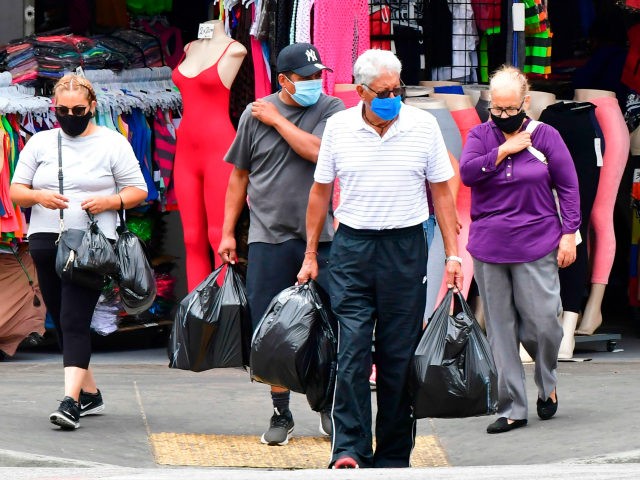ROME — The president of the Italian Society of Anti-infection Therapy (SITA) has criticized new laws mandating outdoor mask-wearing, insisting that these politically motivated maneuvers have “no scientific rationale.”
Dr. Matteo Bassetti, who is also the director of Infectious Diseases at the San Martino Hospital in Genoa, said Friday that the decision by the governor of the Lazio region to impose outdoor masks — and threats by Prime Minister Giuseppe Conte to do the same on the national level — are counterproductive.
On Friday, Lazio Gov. Nicola Zingaretti, who is also the general secretary of the Democratic Party (PD), issued the mask decree following a period of massive coronavirus testing in the country (120,301 tests performed Friday) and a rising number of positive results (2,499 Friday), even though more than 90 percent of those found positive are healthy and asymptomatic.
There are currently fewer than 300 patients in intensive care units in the entire country, with the majority of the infected held under house quarantine. The number of coronavirus deaths has also remained relatively stable and low, averaging 16 per day over the past three weeks, a small fraction of levels during March and April.
According to Dr. Bassetti, there has not been a “significant increase” in the percentage of new cases because the statistics reflect a corresponding increase in the number of tests administered.
Bassetti also said that a much more sensible approach is to educate citizens and allow them to behave responsibly rather than issuing decrees.
“The epidemiological trend offers no scientific basis for these measures,” Bassetti said. “In my opinion, prohibitions do not do much; we need to focus on the involvement of the people, on correct information.”
“I would not want these mandates to trigger an adverse reaction,” he warned.
“The current system was working fine and there was a sense of responsibility,” he added. “New coercion is not useful and, on the contrary, it risks doing harm because it could lead to the opposite effect, that is a reaction of refusal.”
There is also another risk in focusing on masks, he noted, because they are not the only essential measure to avoid contagion.
“I wouldn’t want people to believe that wearing a face mask confers some sort of immunity, when we know that distance and hygiene are just as important,” he said. “These things need to be explained; we need to persuade people rather than obliging them.”
Dr. Bassetti’s arguments are echoed by another well-known Italian virologist, Dr. Giulio Tarro, emeritus professor of the Cotugno Hospital in Naples.
“The rise in infections must be analyzed thoroughly,” Dr. Tarro stated Friday. “Every day about 120 thousand swabs are carried out. Therefore, we need to take into account the proportions and consider that, in March, far fewer were made, yet there were more infections. This means that we have not returned to the starting point.
“Furthermore, currently, only 5 percent of those infected have symptoms,” he added. “The latter is certainly a very significant figure.”
Regarding the mandatory use of masks outdoors, Dr. Tarro defines the measure as “excessive.”
“I think the decision is due more to political propaganda than to functional prevention,” Tarro said.
“From the scientific point of view, very important progress has been made,” he added. “The mortality of the infection is about 1 percent. It seems to me the situation has been magnified, if not exploited, by the media.”
“Is an asymptomatic person to be considered sick? The test itself gives no relevant information,” he said. “If the patient does not have a lack of antibodies, the virus, though present, is not dangerous in any way.”
“This aspect is fundamental, but it seems that this is not sufficiently taken into account,” he said.
Moreover, he added, “we have to remember that the percentage of occupancy in intensive care units is over ten times less than it was in March and April.”

COMMENTS
Please let us know if you're having issues with commenting.